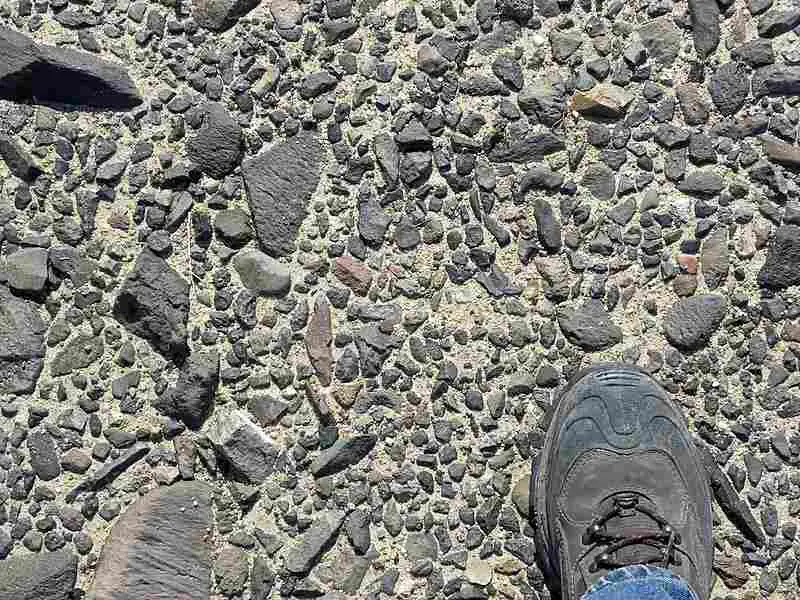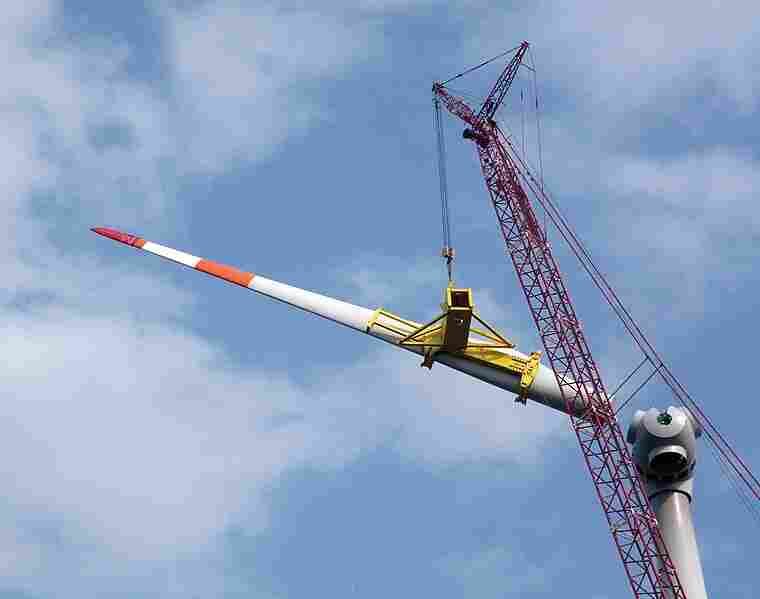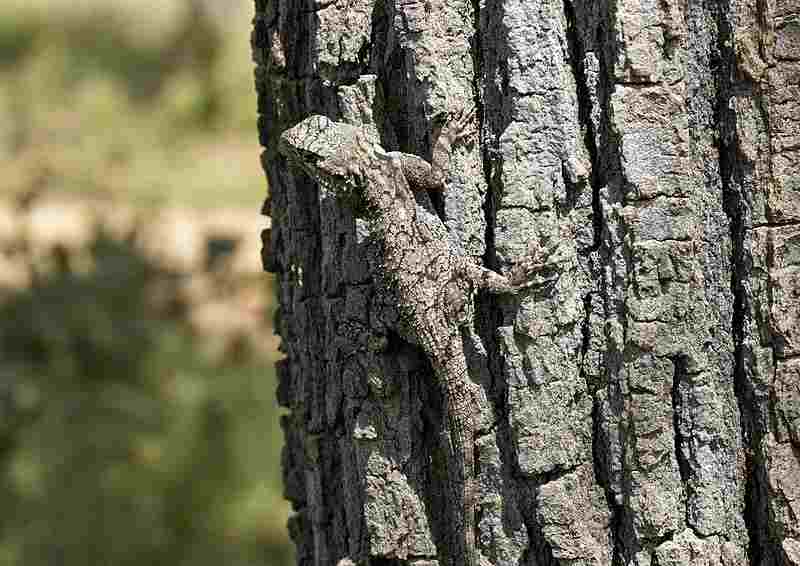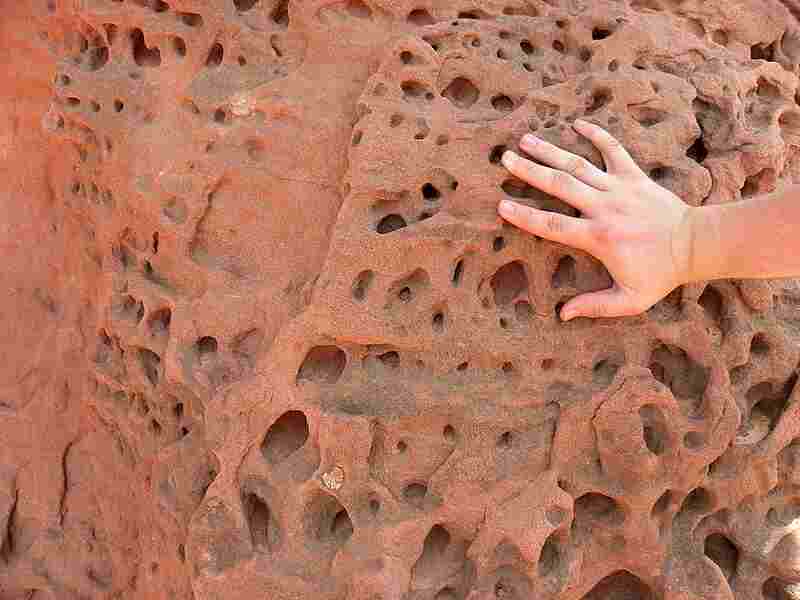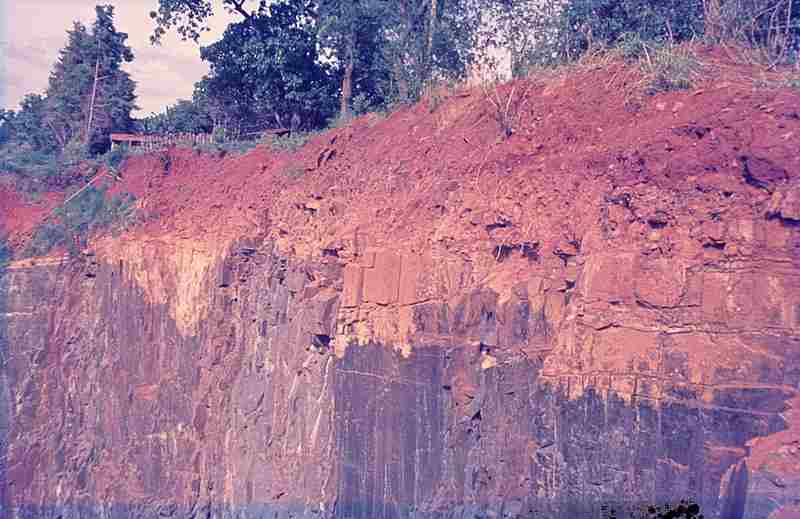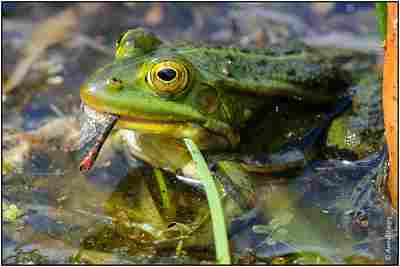9 Abiotic Factors in the Sahara Desert and Their Importance
Abiotic factors in the Sahara Desert are; sunlight, atmospheric gases, physicochemical conditions, wind, aeolian topographic features, precipitation, sand, rocks, nutrient cycling and availability.
This article discusses abiotic factors in the Sahara Desert and their characteristics, as follows;
1). Sunlight (as one of the Abiotic Factors in the Sahara Desert)
Sunlight is arguably the most vital abiotic component of the Sahara Desert ecosystem, especially for its roles in the sustenance of both ecological processes and environmental conditions.
The intensity and availability of sunlight in the desert have notable impacts on both abiotic and biotic factors.
Importance of Sunlight in the Sahara Desert
The importance of sunlight in the Sahara Desert include; contribution to photosynthesis, temperature and climate, evaporation, hydrological cycling, and adaptation of desert plants and animals. Some of these areas are discussed below.
Solar radiation in the form of light, is an essential ingredient for photosynthesis; the process whereby plants utilize light energy to power a series of photochemical reactions that transform carbon dioxide and water to oxygen and glucose [7].
In the Sahara Desert, where vegetation density is relatively low, plants that do occur, are heavily dependent on sunlight to meet their energy needs.
Desert-adapted plants have developed various mechanisms through evolution, to maximize their efficiency of photosynthesis and conserve water in intense heat and drought.

Temperature and climatic conditions are also affected by sunlight in the Sahara Desert.
Intense sunlight contributes to the high temperatures typically experienced during the day [8]. The clear, cloudless skies allow sunlight to penetrate the Earth's atmosphere effectively and reach the surface, which in turn leads to rapid heating of the desert environment.
This implies that sunlight plays a huge part in the extreme daytime temperatures commonly experienced the desert. At night, on the other hand, the lack of significant cloud cover results in rapid thermal energy-loss, and cooling, which account for significant temperature fluctuations between day and night.
Evaporation and other hydrological processes within the water cycle, are significantly powered by sunlight, in the Sahara Desert.
Intense heat from infrared radiation that accompanies sunlight, causes local water bodies, such as rivers, puddles, lakes, and ponds, to quickly evaporate. This process increases the water vapor concentration of the atmosphere, leading to the arid or dry conditions that are characteristic of desert regions.
Abundant sunlight in the Sahara makes it an ideal location for renewable energy projects involving the installation of solar panels and power plants [9].
These technologies are designed to harness the energy from solar radiation for purposes like electricity generation, thereby creating opportunities for sustainable development and energy transition, in the region.

Diverse ecological adaptations of desert animals and plants can be traced to sunlight and its environmental impacts in the ecosystem.
Harsh conditions in the Sahara have fostered the evolution of unique ecological adaptations among native desert organisms.
An example of this can be observed in the nocturnal lifestyle of many desert animals, which are active during the cooler night periods when the intensity of solar heating is reduced. Some desert plants possess specialized features like thick waxy cuticle, which help them to minimize water loss and withstand intense heat.
Some geological and geographic features of the Sahara Desert are a reflection of the relentless sunlight in this ecoregion.
Thee features result from erosion caused by agents like wind; which are in turn driven by solar differential heating.
2). Atmospheric Gases
Atmospheric gases are important, non-living components of the Sahara Desert biome.
The composition of the air, which mainly comprises of nitrogen, oxygen, and other trace gases; has notable implications for the weather trends, long-term climate, and overall ecological equilibrium.
Importance of Atmospheric Gases in the Sahara Desert
Core aspects of the importance of atmospheric gases in the Sahara Desert include their involvement in temperature regulation, precipitation, wind dynamics, weather patterns, photosynthesis, nitrogen fixation, and the greenhouse effect.
Temperature regulation is linked to atmospheric gases, because the presence of different gases in the atmosphere influences thermal energy transfer, in terms of how heat is absorbed, retained and released in the desert.
In the daytime, the Sahara experiences intense solar radiation, which leads to rapid heating of the Earth's surface.
Dry air in the desert allows for maximum solar intensity and efficient absorption of heat, which causes the extreme daytime temperatures.
At night, the lack of air moisture results in rapid heat loss and cooling, causing significant variation between day and nighttime temperatures.
Water vapor in the atmosphere of the Sahara, is fully involved in cloud-formation and precipitation.
Although the amount of water vapor in the desert atmosphere is relatively low in general, occasional increase in humidity and changes in atmospheric conditions may lead to the formation of clouds and sporadic rainfall events.
The composition of atmospheric gases influences weather conditions and wind patterns in the Sahara Desert. Variations in air pressure, resulting from differences in humidity and temperature, cause the formation of wind currents that help develop sand dunes and transport sedimentary particles like dust and fine sand, across vast distances.
One of the atmospheric gases in the Sahara is carbon dioxide, which is requires for photosynthesis.
While carbon dioxide constitutes only a small percentage of the total mass of atmospheric gases, it is essential for photosynthesis, by which plants produce biomass to support the entire desert food chain/energy pyramid.
The sparse vegetation in the Sahara, relies on carbon dioxide to carry out photosynthesis, which sustains their survival and growth.
Another critical atmospheric gas is nitrogen; the most abundant gas in the atmosphere.
Nitrogen is crucial for all of Earth's life forms. In the Sahara, some microorganisms are responsible for converting atmospheric nitrogen into a more stable and usable form which can be taken up by plants [11]. Fixation of nitrogen by such microbes enriches the soil and supports the growth of desert vegetation.
Lastly, atmospheric gases like water vapor and carbon dioxide, contribute to the greenhouse effect, by trapping significant quantities of heat in the Earth's atmosphere.
Although this natural process is essential for maintaining a habitable climate, excessive production of greenhouse gases from human activities can result in global warming and climate change, which affect ecosystems in all parts of the world, including the Sahara Desert.
3). Physicochemical Conditions (as one of the Abiotic Factors in the Sahara Desert)
Physicochemical conditions in the Sahara Desert are dependent on a range of abiotic factors that significantly influence the ecosystem's attributes and dynamics.
These abiotic components are called physicochemical parameters; and play a major role in developing and regulating desert climate, weather trends, and overall ecological-equilibrium.
Physicochemical Parameters in the Sahara Desert and Their Importance
Physicochemical parameters in the Sahara Desert include temperature, light, humidity and salinity. These and others are discussed below.
Temperature in the Sahara is typically extreme during the daytime, often rising high above 40°C (104°F) in the hottest months of the year; and with annual averages nearing 30°C in several areas [6].
These high temperatures impact diverse aspects of the ecosystem, including evaporation rates, water availability, plant physiology, and animal behavior. Intense heat also influences soil moisture levels, and contributes to the arid conditions of the desert.

Availability of light is a physicochemical parameter in the Sahara Desert.
The Sahara receives abundant sunlight all through the year, due to its geographical location and the absence of significant cloud cover. The intense, continuous solar radiation fosters the desert's heat, and drives erosional agents like wind that cause the formation of sand dunes.
The Sahara is one of the driest regions on Earth, with low and sporadic patterns of rainfall. The lack of precipitation limits vegetation growth and restricts the availability of water resources for plants and animals. This conveniently explains the low species richness, organic abundance and biodiversity of this biome compared to others with more water resources, like tropical rainforests.
However, occasional rainfall can trigger short-term blooms of plant life and increase the population of desert wildlife.
Wind is a prominent ecogeographic feature of the Sahara Desert landscape, and is behind the vast sand dunes and mobile particles of fine sand and dust that are continuously being transported across great distances.
The patterns of wind may also influence spatial distribution of plant and animal species, so that several of these adaptations evolve in response to the abrasive effects of airborne sand.
Soil quality can be considered a physicochemical parameter in the Sahara.
Sahara soils are generally poor in organic matter and nutrients, due to the lack of abundant vegetation or animal life, and small scale of biodegradation, of organic material. The arid conditions, and low microbial activity, produce soils with limited fertility, which in turn poses challenges for plant growth and ecosystem sustainability in most cases.
Humidity in the Sahara is low, especially in the daytime when temperatures are at their highest level. The dry air facilitates other physicochemical conditions such as high solar intensity and temperature fluctuation. It also reduces the rate of water retention by plants.
Different areas of the Sahara have different levels of salinity.
Some zones may have saline soils or salt flats [5], due to evaporation of mineralized water. The presence of salts in soil can further limit the growth of vegetation, and pose challenges for desert-adapted animal and plant species.
4). Wind
Wind is an iconic, non-living constituent of the Sahara Desert ecosystem, with immense importance in multiple aspects.
It is a dominant energy resource that controls the desert's climate, modifies its landscape, and influences its ecological processes.
Importance of Wind in the Sahara Desert
Aspects of the importance of wind in the Sahara Desert include; erosion, sediment transport, sand dune-development, seed dispersal, surficial evaporation, dust storm hazards, climatic dynamics, and dust fertilization.
The constant and intense winds blowing in the Sahara, lead to erosion of parent rocks and transport of sediments.
As an agent of erosion, wind wears down rocks and reshapes sand particles, forming raw sedimentary materials that make up dunes and other characteristic landscape features. Subsequently, the transport of fine sand and dust particles over extensive distances, causes to the formation of large sand dunes and desert pavements.
This implies that wind plays a key role in creating sand dunes, the most iconic geological/aesthetic feature of the Sahara. Accumulation of sand in specific zones due to wind deposition, produces dunes of various shapes and sizes. The morphology, scale and orientation of such features vary with wind direction and intensity.
In addition to its roles in erosion, deposition and dune formation, wind serves as an effective agent for seed dispersal in the Sahara Desert.
Plants in the region have evolved adaptations to improve wind-based dispersal, including lightweight seeds that can be transported by wind over long distances, although such adaptations are generally rare [3]. For the plants that possess the required seed morphology, this mechanism of dispersal allows plants to colonize new areas, and fosters genetic diversity within the plant population.

Surface water bodies are scarce and short-lived in the Sahara Desert, which is characterized by arid conditions. Strong winds drive the evaporation of surface water, and contribute to the rapid drying of ephemeral aquatic systems like ponds and lakes in arid zones.
Intense dust storms are not uncommon in the Sahara Desert.
These are powerful events in which large amounts of dust and sand are mobilized, suspended in the air, and transported energetically across long distances. These dust storms can have far-reaching impacts, including influences on weather patterns in adjacent regions, and even fertilization of distant biomes with nutrient-rich dust.
Wind patterns in the Sahara are known to influence climate on a regional (and global) scale. Wind currents from the Sahara can transport warm, dry air masses to other parts of the African continent and beyond, thereby altering atmospheric pressure and precipitation patterns in neighboring zones.
Dust fertilization is a phenomenon that can be attributed to Sahara Desert wind [2].
The dust carried by this wind contains nutrients like nitrogen and phosphorus. When this dust settles on soil in nearby areas, it can serve as a natural fertilizer, and may support plant growth through increased soil fertility.
5). Aeolian Topographic Features (as one of the Abiotic Factors in the Sahara Desert)
Aeolian topographic features in the Sahara Desert are landforms that have been shaped primarily by the erosive action of wind.
These features are important abiotic factors in the desert ecosystem because they symbolize the dynamics of non-living elements, and are part of the desert landscape.
They may be said to influence multiple ecological processes, and to provide habitats for several desert organisms.
Examples of Topographic Features in the Sahara Desert
Some typical aeolian topographic features in the Sahara Desert include; sand dunes, desert pavements, yardangs, and ventifacts. They are discussed below.
Sand dunes are perhaps the most well-known and iconic aeolian landforms in the Sahara.
They are created when wind-blown sand accumulates in the form of distinct ridges or mounds of loose sediment.
Sand dunes occur in various categories, including transverse dunes, longitudinal dunes, parabolic dunes, barchanoid dunes, and barchan dunes [4], which are differentiated during their formation by variations in sand availability and wind direction. These dunes often provide habitats for specialized insects, reptiles, small mammals and plants that have adapted to such micro-zones.
Another aeolian feature in the Sahara Desert that is relatively-common is the desert pavement.
This feature results from the removal of fine particles by erosional wind currents, to leave behind a surface composed of coarser materials like cobbles, pebbles, and irregular rock fragments [10].
Desert pavements may serve as a mechanical barrier that protects underlying soil from further erosion. They may also serve as habitats for plants and some animals.

Yardangs are streamlined and elongated sedimentary ridges sculpted by wind erosion.
Typically their morphology is aligned with the direction of prevailing winds. They are also composed of soft rock layers that are easy to erode.
Yardangs are important geological features, because they can be studied to derive valuable information about past climatic conditions, and wind patterns in the desert region.
Ventifacts are rocks which have been carved and polished by abrasive sand particle carried in strong winds. They usually for over an extended time period, during which wind is able to sculpt parent rocks into smooth, multifaceted structures, which create unique geological aesthetics in the desert.
Importance of Aeolian Topographic Features in the Sahara Desert
The importance of aeolian topographic features in the Sahara Desert can be traced to their involvement in habitat creation, water capture, seed dispersal, and climatic dynamics.
Aeolian features create microhabitats for various desert-adapted species, including some vascular plants, insects, and reptiles. Some of the plants have evolved specialized adaptations that enable them colonize sand dunes effectively, while certain reptiles and insects use dunes for shelter and thermoregulation.
Desert pavements and sand dunes are capable of capturing and retaining water during sporadic rainfall events. The water trapped is essential for supporting desert animals and sustaining plant life, thereby contributing to the overall resilience of the ecosystem.
Dust and sand particles that are transported by wind, often serve as media for seed dispersal in many desert plants.
The seeds produced by plants in the desert can be transported by wind over considerably long distances, so that plant populations are established in different areas.
Local climatic conditions are influenced by aeolian topographic features, in terms of factors like humidity and temperature levels. Aeolian features can create microclimates which affect the overall conditions of the desert and the survival of resident organisms.
6). Precipitation and Water Availability
Precipitation and water availability in the Sahara Desert are both important factors that are related to each other, and greatly influence the dynamics of the ecosystem.
The Sahara is known for its dry or arid climate, so that water resource-depletion and scarcity are significant challenges for both animals and plants.
Precipitation can be defined as water, in any of various forms, that falls from the atmosphere to the Earth's surface. In the Sahara Desert, the amount of precipitation is extremely low and subject to significant fluctuation across the region.
Estimates of precipitation in the Sahara Desert vary with specific location and period of year. On average, the Sahara receives about 25 to 150 millimeters (1 to 6 inches) of rainfall annually, with an average of less than 100 millimeters [1].
However, some areas may receive even less than this range, while others areas may experience occasional rainfall that can result in short-lived vegetation blooms.
Functions of Precipitation in the Sahara Desert Ecosystem
The functions of precipitation in the Sahara Desert include; water provision, facilitation of plant growth, aquifer replenishment, formation of temporary ponds, suppression of airborne dust particles, landform development, and sustenance of nomadic livestock. They are discussed below.
Precipitation serves as the primary source of water in the Sahara Desert.
While rainfall is irregular and scarce, it is required for the survival of animal and plant communities. It is the main avenue by which water enters the ecosystem, enabling plants and animals to access this critical resource.
Plant growth in the desert is dependent on access to water.
As a result, small amounts of rainfall can facilitate the growth of drought-tolerant plant species, which take advantage of any available water for rapid reproduction, creating blooms of vegetation in specific areas.
In some regions, water supplied during precipitation, infiltrates the ground and recharges underground aquifers.
These aquifers retain the water and serve as critical reservoirs for both human communities and natural habitats within the desert region.
Temporary pools or ponds may form during periods of heavy rainfall. These ephemeral bodies of water provide breeding grounds for some desert-adapted species of insects and amphibians, among others.
Rainfall can also suppress sandstorms and dust and sandstorms for brief periods, by moisturizing the dry desert soil. Although this effect is short-lived, it can mitigate local air pollution to a measurable extent, and may have a positive impact on the surrounding environment.
Small amounts of rainfall occurring repeatedly over extended periods of time, can shape the desert landscape by loosening rock materials, facilitating erosion, and creating unique landforms such as dry riverbeds, also known as wadis [13].
Nomadic herding within the Sahara region and its surrounding semiarid zones, benefits from precipitation, which leads to the growth of sparse vegetation, that sustains grazing animals.

7). Sand (as one of the Abiotic Factors in the Sahara Desert)
Sand is a prominent non-living component of the Sahara Desert ecosystem and defines some of the typical dynamics and characteristics of this vast arid biome.
It is a defining attribute of the desert, and covers large areas in the form of sand seas, flat expanses of windswept land, and sand dunes.
Characteristics, Dynamics and Role(s) of Sand in the Sahara Desert
The presence of vast amounts of sand in the Sahara Desert, is responsible for creating the iconic landscape that is typical of this biome.
Extensive sand dunes and massive sand seas are both common features shaped by wind erosion over prolonged periods of time. These sand formations give the desert its unique aesthetic and compositional attributes.
The presence of vast expanses of sand contributes to low vegetation cover in the Sahara Desert.
Sand seas and dunes often lack sufficient nutrients to support substantial growth of plants. As a result, vegetation coverage is sparse and mainly restricted to zones with some degree of humidity, such as dry riverbeds and oases.
The salinity of soil underneath the sand in the Sahara Desert is relatively high. This can be attributed to the low amount of rainfall and the process of precipitation and salt accumulation that occurs in the soil as water evaporates from the surface.
Heat absorption and reflection (from the sun) of sand is fairly high in the Sahara Desert, because of the capacity of soil to absorb and retain heat from the sun in the daytime.
It contributes to the desert's extreme daytime temperatures. At night, the sand rapidly loses heat, resulting in significant temperature fluctuations between day and night.
The loose nature of sandy sediments in the Sahara Desert results in a phenomenon called "dun migration" whereby sand dunes constantly change shape and position as a result of wind action [12]. This phenomenon contributes to the dynamic nature of the desert landscape.
Given the prevalently harsh conditions, sand often provides a suitable substrate for habitation by various desert species. Several desert animals use sand structures like dunes for shelter.
Sand particles in the Sahara Desert can be transported by wind, and contribute to various geological structures that form in the desert region, including those formed by abrasive weathering.
Lastly; sand often symbolizes the link between the Sahara Desert and human influences, with activities like sand extraction and mining for construction purposes, having disruptive effects on the natural configuration of the ecosystem (although desert sand is too fine to be used as a component of concrete, it is useful in the preparation of cement-based materials in the construction industry [14]).

8). Rocks
Rocks are another important abiotic component of the Sahara Desert ecosystem, and are closely linked to the presence and characteristics of the desert sand.
Ecological Importance of Rocks in the Sahara Desert, and Their Link to Sand Masses
Rocks provide the base layer or underlying substrate for subsequent accumulation of sand in the desert.
Over extended periods of time, rocks undergo weathering processes in reaction to wind bombardment, occasional precipitation, and extreme temperatures.
This weathering breaks down the rocks into smaller particles that contribute to the formation of sand.
In some parts of the Sahara Desert, rock assemblages are modified to form what is generally known as desert pavements.
These can be described as flat and compacted surfaces where rocks are closely aggregated together, slowing down or preventing sand transport and erosion across their lateral extent. Desert pavements are involved in stabilizing the desert surface, and reducing the rate at which sand accumulates in certain regions.
Wind blowing over the rock surfaces in the Sahara, can erode and transport fine particles of dust and sand, which contribute to the dynamics and features of sand movement in the desert. Erosion of rocks can also cause the release of essential minerals into the ecosystem, that influence soil fertility and composition.
Like sand masses, desert rocks create important habitats for various desert-adapted animal and plant species. Some plants, including succulents like cacti, find protection and shelter among rocks.
Animals, such as small mammals and reptiles, may utilize boulders and rocky crevices as hiding spots from predators and extreme temperature conditions.
Rocks of the Sahara Desert are potential sources of valuable information about the evolution and geological history of the region. Sedimentary features and fossilized remains found in the sedimentary rocks can provide insights into past climates and ecosystems that existed in the area.
Impermeable rocks in certain areas, can act as natural water reservoirs or collectors.
During rainfall events in the desert, water can accumulate temporarily in rock depressions, known as "rock catchments". These water sources are usually instrumental to the survival of desert fauna during periods of dryness.
Lastly, rocks have historical and cultural significance for the indigenous people of the Sahara Desert.
9). Nutrient Cycling and Availability (as one of the Abiotic Factors in the Sahara Desert)
In the Sahara Desert, nutrient cycling and availability are both vital phenomena with respect to supporting the limited animal and plant life in this harsh ecosystem.
While it is in fact a nutrient-poor ecosystem, the availability and cycling of nutrients are required for the survival, adaptation and continuity of desert organisms.
Important Concepts Related to Nutrient Cycling and Availability in the Sahara Desert
Some important concepts related to nutrient cycling and availability in the Sahara Desert are; nutrient-poor soil conditions, limitations of water availability, microbial contribution, role in organic adaptation, link to sediments and dust storms, and impact on food chains.
Desert soils in the Sahara region are generally nutrient-poor as a result of both limited water availability and low organic matter content.
The limitations of water availability slows down hydrological weathering that could release nutrients from rock mineral constituents. As a result, essential nutrients like potassium (K), nitrogen (N), and phosphorus (P), are scarce in the soil.
Water is a critical abiotic factor that influences nutrient availability in the desert biome. Limited precipitation combined with high evaporation rates, result in water scarcity, which affects nutrient recycling and uptake by plants. Desert plants have developed various mechanisms (through adaptive evolution) to optimize nutrient acquisition and water consumption.
In spite of the challenging conditions, desert soils still host microbial populations that contribute to nutrient cycling. Microbes like fungi and bacteria, play a key role in degrading organic matter and releasing nutrients in mineral forms that plants can uptake.
Decomposers, like detritivorous insects and microbes, contribute to nutrient cycling when they break down plant and animal materials. This process releases nutrients back into the soil, and makes them available for other organisms.
Many adaptations of desert plants are strategies for coping with limited nutrient availability.
Some of these plants possess deep root systems to access nutrients in deeper soil layers, while others have evolved to benefit from mutualistic relationships with mycorrhizal fungi which enhance their nutrient uptake.
Dust storms are common within the Sahara Desert, and contribute to nutrient cycling. Dust particles transported by wind may contain trace amounts of essential minerals that contribute to nutrient input, wherever they settle.
Lastly, nutrient availability has a direct influence on the food chain and trophic interactions occurring in the Sahara Desert. Limited nutrient resources result in simpler food webs with smaller population, fewer trophic levels, lower diversity and energy transfer, compared to more nutrient-rich ecosystems.
Conclusion
Abiotic factors in the Sahara Desert are;
1. Sunlight
2. Atmospheric gases
3. Physicochemical conditions
4. Wind
5. Aeolian topographic features
6. Precipitation
7. Sand
8. Rocks
9. Nutrient cycling and availability
References
1). Chen, Z.; Wen, Q.; Yang, H. (2021). "Impact of Tibetan Plateau on North African precipitation." Springer, Climate Dynamics 57(9-10). Available at: https://doi.org/10.1007/s00382-021-05837-2. (Accessed 6 August 2023).
2). Dansie, A.; Wings, G. F. S.; Thomas, D. S. G.; Washington, R. (2017). "Measurements of windblown dust characteristics and ocean fertilization potential: The ephemeral river valleys of Namibia." Aeolian Research 29:30-41. Available at: https://doi.org/10.1016/j.aeolia.2017.08.002. (Accessed 6 August 2023).
3). Fllner, S.; Shmida, A. (1981). "Why are adaptations for Ion-grange seed dispersal rare in desert plants." Oecologia 51(1):133-144. Available at: https://doi.org/10.1007/BF00344663. (Accessed 6 August 2023).
4). Ghrefat, H. A. (2011). "The geology of sand dunes." Available at: https://www.researchgate.net/publication/287244680_The_geology_of_sand_dunes. (Accessed 6 August 2023).
5). Halis, Y.; Benhaddya, M. L.; Lamine, B.; Hocine, M.; Rabah, L.; Ali, B.; Mohamed. (2012). "Diversity of Halophyte Desert Vegetation of the Different Saline Habitats in the Valley of Oued Righ, Low Sahara Basin, Algeria." Research Journal of Environmental and Earth Sciences 4(3). Available at: https://www.semanticscholar.org/paper/Diversity-of-Halophyte-Desert-Vegetation-of-the-in-Youcef-Lamine/322389b94c8565bb49c78a1a8531ad409c945325. (Accessed 6 August 2023).
6). Hereher, M. (2011). "The Sahara: A Desert of Change." Sand Dunes: Ecology, Geology and Conservation (pp.101-114). Available at: https://www.researchgate.net/publication/266614200_The_Sahara_A_Desert_of_Change. (Accessed 6 August 2023).
7). Leister, D. (2023). "Enhancing the light reactions of photosynthesis: Strategies, controversies, and perspectives." Molecular Plant, Volume 16, Issue 1, 2 January 2023, Pages 4-22. Available at: https://doi.org/10.1016/j.molp.2022.08.005. (Accessed 6 August 2023).
8). Middleton, N. (2009). "Deserts: A Very Short Introduction." Available at: https://doi.org/10.1093/actrade/9780199564309.001.0001. (Accessed 6 August 2023).
9). Miloud, Y.; Mohamed, M.; Miloudi, A.; Kurokawa, K.; Oozeki, T. (2015). "Sahara solar breeder for sustainable development of renewable energy." Available at: https://doi.org/10.1109/EFEA.2014.7059987. (Accessed 6 August 2023).
10). Seong, Y. B.; Dorn, R.; Yu, B. Y. (2016). "Evaluating the life expectancy of a desert pavement." Earth-Science Reviews 162(6). Available at: https://doi.org/10.1016/j.earscirev.2016.08.005. (Accessed 6 August 2023).
11). Smail, M.; Muñoz-Martín, M. A.; Mabrouka, O.; Hamdi-Aissa, B.; Perona, E.; Mateo, P. (2021). "Microenvironmental Conditions Drive the Differential Cyanobacterial Community Composition of Biocrusts from the Sahara Desert." Microorganisms 9(3):487. Available at: https://doi.org/10.3390/microorganisms9030487. (Accessed 6 August 2023).
12). Tsoar, H.; Blumberg, D. G.; Stoler, Y. (2004). "Elongation and migration of sand dunes." Geomorphology 57(3):293-302. Available at: https://doi.org/10.1016/S0169-555X(03)00161-2. (Accessed 6 August 2023).
13). Yan, D.; Zhang, X.; Yu, Y.; Guo, W.; Hanan, N. P. (2016). "Characterizing land surface phenology and responses to rainfall in the Sahara Desert." Journal of Geophysical Research: Biogeosciences 121(8). Available at: https://doi.org/10.1002/2016JG003441. (Accessed 6 August 2023).
14). Zhang, M.; Zhu, X.; Shi, J.; Liu, B.; He, Z.; Liang, C. (2022). "Utilization of desert sand in the production of sustainable cement-based materials: A critical review." Construction and Building Materials 327(1):127014. Available at: https://doi.org/10.1016/j.conbuildmat.2022.127014. (Accessed 6 August 2023).
